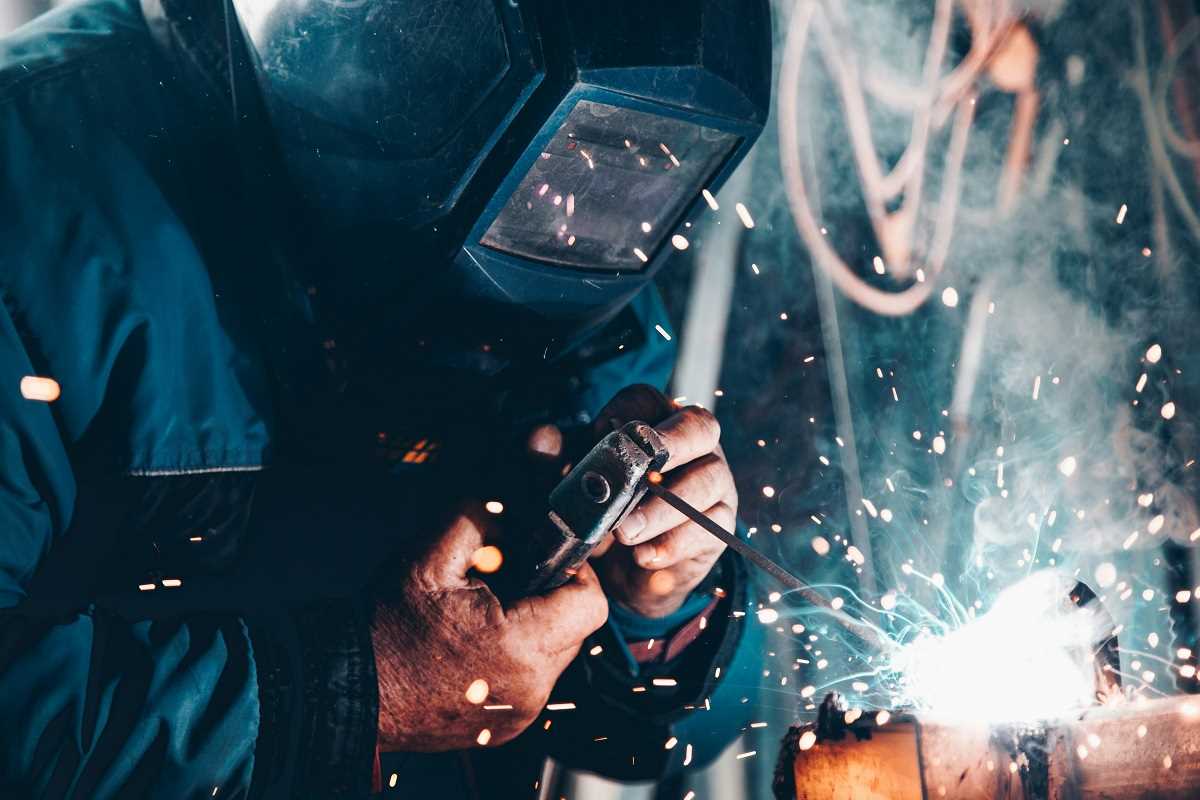Welding and metalwork have long been celebrated as both an essential industrial skill and a creative art form. From towering skyscrapers to intricate sculptures, the ability to join and shape metal has helped humans build, innovate, and express themselves for centuries. Mastering the craft of welding and metalwork requires a mix of precision, creativity, and technical know-how. Whether you're working on a major construction project or crafting something unique for personal satisfaction, this article will guide you into the fascinating world of welding and metalworking.
The Core Skills and Techniques
Welding and metalwork encompass a variety of skills and techniques, each vital for professionals and hobbyists alike. At its core, welding involves fusing two materials (usually metals) together with heat or pressure. However, it’s far more than just holding a welding torch. Success in welding and metalwork relies on understanding the materials, mastering specific welding processes, and maintaining high levels of accuracy and control.
Types of Welding Processes
There are several welding methods, each suited for specific applications. The main types include:
- MIG Welding (Metal Inert Gas): This beginner-friendly welding technique uses a wire electrode and shielding gas to create a clean and precise weld. Ideal for projects requiring speed, such as automotive repairs or manufacturing.
- TIG Welding (Tungsten Inert Gas): Known for producing high-quality and precise welds, TIG welding uses a tungsten electrode. This technique is often used on thin materials and in applications requiring detailed work, such as aerospace and artistic projects.
- Stick Welding (Shielded Metal Arc Welding): Often regarded as the most versatile welding method, stick welding uses an electrode to create strong, durable welds. It’s particularly suited to outdoor work because it performs well in various weather conditions.
- Flux-Cored Arc Welding (FCAW): Similar to MIG welding but without the need for an external shielding gas, FCAW is excellent for working with thicker materials. It's commonly used in construction and heavy-duty metalwork.
Each type of welding demands a unique set of skills and equipment, making it essential for aspiring welders to educate themselves on which process best fits their needs.
Tools and Equipment in Metalworking
Mastering welding and metalworking begins with understanding the tools of the trade. Here’s a breakdown of key equipment used by professionals and beginners:
- Welding Machines: The centerpiece of any welding setup. Machines vary depending on the welding type (MIG, TIG, Stick) and project scale. Advanced machines often come with customizable settings for precise control.
- Protective Gear: Safety is paramount in welding. Essential protective equipment includes welding helmets (with an auto-darkening feature), heat-resistant gloves, flame-resistant jackets, and steel-toed boots.
- Cutting Tools: Metalworkers often need to cut pieces of metal before welding. Tools like plasma cutters, angle grinders, and metal saws are essential for shaping materials to the desired specifications.
- Measuring Tools: Precision is key in metalworking, so calipers, protractors, and tape measures help ensure accuracy when cutting or joining metal components.
- Clamps and Jigs: These tools secure materials in place while you work, ensuring stability and proper alignment for clean welds.
Additionally, a well-organized workspace equipped with ventilation systems for removing welding fumes ensures a safer and more efficient working environment.
Safety Precautions
Welding and metalwork come with inherent risks, such as burns, electric shocks, and exposure to toxic fumes. Following proper safety protocols is non-negotiable for anyone pursuing this craft.
- Wear Protective Gear: Always wear a certified welding helmet, gloves, and flame-resistant clothing. Your helmet protects your eyes and face from harmful UV radiation, sparks, and flying debris.
- Ensure Proper Ventilation: Welding produces fumes that can be harmful when inhaled. Use ventilation systems or fume extractors to maintain air quality.
- Inspect Your Equipment: Regularly check welding machines and tools for signs of wear and tear. Faulty equipment can lead to accidents.
- Mind Your Workspace: Keep your area clutter-free and ensure flammable materials are stored safely away from the welding zone.
- Educate Yourself: Before tackling a welding project, familiarize yourself with the specific process, materials, and safety guidelines.
By making safety a top priority, you can focus on improving your skills and producing high-quality work.
Precision, Creativity, and Craftsmanship
Welding and metalworking are not just technical—it’s an art form that requires creativity and an eye for detail. Precision is paramount, whether you're repairing a car chassis or crafting a wrought-iron gate. Small mistakes can weaken a weld or compromise the integrity of a piece.
The creative side of welding shines in artistic and decorative metalwork. Sculptors use techniques like TIG welding to create intricate designs, while DIY enthusiasts build custom furniture or one-of-a-kind home décor items. Welding allows unparalleled freedom to shape and fuse materials, making it a favorite medium for artists who work in three dimensions.
Applications of Welding and Metalwork in Various Industries
Welding and metalworking are incredibly versatile and find applications in industries ranging from construction to fine arts. Here are just a few examples:
- Construction: Skyscrapers, bridges, pipelines, and other infrastructure projects rely heavily on welding to ensure structural integrity.
- Automotive and Aerospace: Welding plays a critical role in vehicle repairs, manufacturing, and the fabrication of specialized components for airplanes and spacecraft.
- Manufacturing: From household appliances to industrial machinery, metalworking underpins the production of countless everyday and specialized products.
- Art and Design: Sculptors and designers use welding to create unique works of art, functional furniture, and architectural features.
Even renewable energy projects, such as wind turbines or solar panel mounts, benefit from expert welding craftsmanship.
Schools and Institutions to Learn Welding and Metalwork
For those eager to master welding and metalworking, formal training can make a significant difference. Below is a list of reputable schools and training centers that provide excellent programs to build and refine your skills.
Lincoln Electric Welding School (Cleveland, Ohio)
Lincoln Electric, a renowned name in the welding industry, offers hands-on courses tailored to various skill levels. From basic welding fundamentals to advanced techniques like TIG and pipe welding, their state-of-the-art facilities and expert instructors provide an immersive experience. Students benefit from industry-standard equipment and connections to potential employers.
Tulsa Welding School (Multiple Locations)
With campuses in Oklahoma, Texas, and Florida, Tulsa Welding School offers comprehensive programs covering MIG, TIG, and pipe welding, alongside metal fabrication techniques. Their accelerated courses prepare students for industries such as construction, shipbuilding, and aerospace, making it an excellent choice for those seeking quick entry into the workforce.
Hobart Institute of Welding Technology (Troy, Ohio)
The Hobart Institute has been a staple in welding education for over 80 years. Its curriculum blends hands-on instruction with classroom learning, focusing on both the technical and practical aspects of welding. Students can choose from specialized programs like structural welding or comprehensive certifications covering multiple disciplines.
Universal Technical Institute (UTI)
UTI has campuses across the U.S. offering welding programs with a strong emphasis on industry relevance. Combining theoretical knowledge with real-world applications, UTI’s partnerships with major manufacturers and employers provide students with excellent job placement opportunities after graduation.
Local Community Colleges and Technical Schools
Many community colleges and technical schools offer welding and metalworking courses at an affordable cost. For example, Lansing Community College (Michigan) and Portland Community College (Oregon) provide certifications and associate degree programs that cater to beginners and advanced students alike. Their smaller class sizes and local industry ties make them accessible options.
American Welding Society (AWS) Certification Programs
Although not a traditional school, the AWS partners with training centers nationwide to offer specialized certifications for welders. These certifications are highly regarded across multiple industries and allow aspiring metalworkers to enhance their credentials through workshops and training sessions.
Each of these institutions offers a unique pathway to mastering welding and metalworking. Whether you prioritize hands-on practice, advanced technology, or industry connections, these schools provide the foundational knowledge and experience you need to thrive in this rewarding field.
 (Image via
(Image via





.jpg)